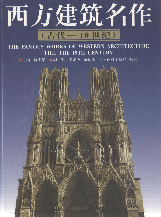
并列正书名: The Famous Works of Western Architecture Till the 19th Century
主要责任者: 陈志华;李宛华,陈衍庆
责任方式: 主编;副主编
出版者: 河南科学技术出版社
出版地: 郑州
字数: 180 千字
页码: 1-382
开本: 16
中图分类号: TU-881
装帧: 精
语种:中
定价:258.00
出版时间:2000-06
丛书多卷书否:否
书目简介:本册工具书共收录135条词条。
被引频次:11
| 词条 | 西方建筑名作(古代-19世纪) |
| 类别 | 中文百科知识 |
| 释义 |  并列正书名: The Famous Works of Western Architecture Till the 19th Century 主要责任者: 陈志华;李宛华,陈衍庆 责任方式: 主编;副主编 出版者: 河南科学技术出版社 出版地: 郑州 字数: 180 千字 页码: 1-382 开本: 16 中图分类号: TU-881 装帧: 精 语种:中 定价:258.00 出版时间:2000-06 丛书多卷书否:否 书目简介:本册工具书共收录135条词条。 被引频次:11 |
| 随便看 |
开放百科全书收录579518条英语、德语、日语等多语种百科知识,基本涵盖了大多数领域的百科知识,是一部内容自由、开放的电子版国际百科全书。